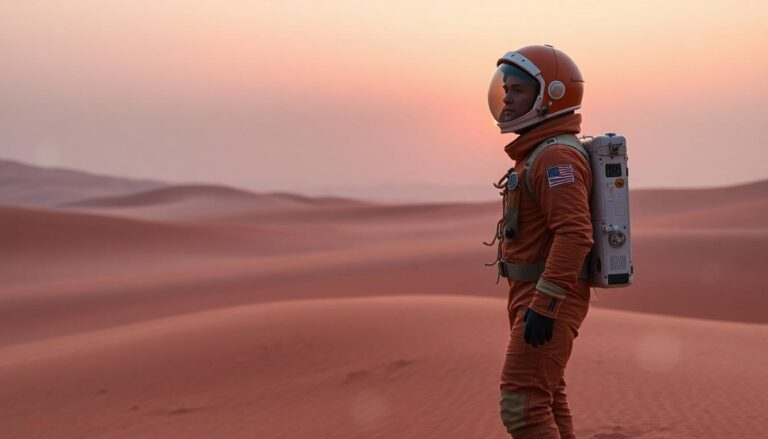Braiding Sweetgrass by Robin Wall Kimmerer – A Thoughtful Book Review
What happens when you combine the precision of a scientist with the storytelling of an Indigenous teacher? In Braiding Sweetgrass, Robin Wall Kimmerer does just that, weaving together her expertise as a botanist and her identity as a member of the Potawatomi Nation. The result is a powerful reflection on our connection to nature. This book invites readers to rethink the ways we engage with the environment—offering lessons of gratitude, reciprocity, and care. Whether you’re curious about Indigenous wisdom, seeking a fresh perspective on sustainability, or simply wanting a beautifully written exploration of the natural world, this book delivers.
About the Author: Robin Wall Kimmerer
Robin Wall Kimmerer is a rare blend of scientist, storyteller, and cultural teacher who brings a unique depth to her work. As the author of Braiding Sweetgrass, she shares wisdom that connects ecological science with Indigenous traditions, offering insights that resonate deeply with readers. Her life’s work is a reflection of her dual heritage and academic expertise, making her voice both authoritative and compassionate.
A Botanist with a Passion for Plants
Kimmerer is not just an author—she’s a seasoned botanist. As a professor of environmental and forest biology at the State University of New York’s College of Environmental Science and Forestry, she specializes in plant ecology. Her academic background allows her to explain complex ecological systems with clarity and precision. However, what truly sets her apart is her ability to bridge the gap between science and lived experience.
In her professional role, Kimmerer explores the intricate relationships between plants and ecosystems. But she doesn’t stop at the facts. She invites readers to consider plants not just as resources, but as teachers and companions. Her work challenges the typical human-centered perspective on nature, fostering understanding of the interconnectedness of all living things.
Learn more about her background on her official site.
A Voice Rooted in Potawatomi Heritage
As an enrolled member of the Citizen Potawatomi Nation, Kimmerer draws on her Indigenous heritage to enrich her storytelling. The Potawatomi, part of the larger Anishinaabe cultural group, hold traditions that emphasize reciprocity, gratitude, and respect for nature. These values permeate her writing, offering a worldview that feels both ancient and refreshingly relevant.
Through Potawatomi teachings, Kimmerer addresses modern environmental challenges with a sense of hope and responsibility. She weaves traditional ecological knowledge with scientific insights, asking her audience to rethink how they perceive the natural world. By doing so, she demonstrates that Indigenous wisdom is not only culturally significant but also scientifically valid.
For additional insights into her heritage and work, visit her Wikipedia page.
Bridging Two Worlds: Science and Storytelling
What makes Robin Wall Kimmerer truly stand out is her ability to seamlessly integrate two distinct perspectives: the analytical rigor of a scientist and the reflective depth of an Indigenous storyteller. This dual lens allows her to communicate the urgency of environmental stewardship in a way that feels personal and tangible.
Her narrative style transforms abstract concepts into relatable experiences. Whether discussing the lifecycle of plants or Indigenous ceremonies, she invites readers to see the sacred in the everyday. It’s this combination of fact and feeling that makes her work deeply impactful.
Her contributions to both science and culture were recognized in 2022 when she was named a MacArthur Fellow. Learn more about her accolades from the MacArthur Foundation.
Robin Wall Kimmerer’s unique voice, rooted in both scientific practice and cultural tradition, makes her work accessible, engaging, and profoundly transformative. When you read Braiding Sweetgrass, you’re not just reading about plants—you’re engaging with a fresh way of seeing the world.
Key Themes in Braiding Sweetgrass
One of the standout qualities of Braiding Sweetgrass by Robin Wall Kimmerer is its ability to frame humanity’s relationship with the natural world in accessible, yet profound terms. Kimmerer uses storytelling, science, and Indigenous knowledge to teach us about living in harmony with nature. Let’s explore a few of the book’s key themes that leave a lasting impression on readers.
Reciprocal Relationships with Nature
At its core, Braiding Sweetgrass asks us to reevaluate how we engage with the world around us. Kimmerer highlights reciprocity as the foundation of a meaningful relationship with nature. What does this mean? Simply put, it’s about mutual giving. Instead of only taking from the Earth, we need to give back—and not just in material terms, but through respect and care.
For example, Kimmerer tells the story of gathering sweetgrass, a sacred plant. She explains that when harvesting, one should never take more than needed and must always leave enough for the plant community to thrive. This act of respect ensures the sustainability and survival of not only the sweetgrass but the ecosystem it supports.
This idea challenges the consumer-driven mindset many of us are accustomed to. What if, instead of treating nature as a resource to exploit, we treated it as a partner? How might that change the way we live? As Kimmerer demonstrates, reciprocity isn’t just an environmental ethic; it’s a way to rebuild connections that modern life has eroded. For more on this theme, check out this guide to the book’s themes.
The Honorable Harvest
A significant part of Kimmerer’s message is rooted in the concept of the Honorable Harvest. This traditional Indigenous principle outlines ethical guidelines for human interaction with nature. The Honorable Harvest is not a written rulebook—it’s a lived practice that teaches us to take only what is needed, to use everything we take, and to share what we receive with gratitude.
In one chapter, Kimmerer describes how these principles apply to everyday life, from picking wild berries to using water responsibly. It’s about recognizing that every gift from nature—whether it’s food, materials, or beauty—comes with a responsibility to ensure its longevity. She eloquently puts it, “Take only what you need and leave the rest for the others.” The Honorable Harvest isn’t just about sustainability; it’s about respect for the sacred exchange of life.
Curious about how this principle can guide modern sustainability practices? Learn more in this resource about the Honorable Harvest.
Gratitude as a Practice
If there’s one emotion that pulses through the pages of Braiding Sweetgrass, it’s gratitude. Kimmerer encourages readers to adopt gratitude as a daily practice, not as a superficial exercise but as a transformative way of living. In Indigenous cultures, gratitude is woven into ceremonies, storytelling, and even daily routines. Thankfulness isn’t reserved for special occasions; it’s a continuous acknowledgment of life’s interdependence.
One example from the book is the “Thanksgiving Address,” a traditional prayer that expresses gratitude toward everything from the water and soil to the stars and sun. This practice reminds us to pause and appreciate the countless ways nature sustains us. Imagine how different our lives might feel if we started each day with a similar acknowledgment of the Earth’s gifts. Gratitude, as Kimmerer explains, fosters not just personal happiness but a deeper commitment to caretaking our planet.
Gratitude isn’t just good for the planet—it’s good for the soul. Dive deeper into Kimmerer’s reflections on gratitude here.
Integrating Western Science with Indigenous Wisdom
One of the most compelling aspects of Kimmerer’s writing is how she blends her training as a botanist with her Potawatomi heritage. Many assume science and storytelling occupy separate worlds, but Kimmerer proves they can thrive together. Through this integration, she offers a holistic approach to understanding nature, one that values logic and intuition equally.
For instance, Kimmerer explains the behavior of pecan trees, describing how they “talk” to each other through chemical signals to ensure a balanced nut harvest. This scientific insight pairs beautifully with Indigenous stories of plants acting as teachers and caregivers, showing us the wisdom encoded in nature itself. Rather than treating science and spirituality as opposites, Kimmerer suggests they’re two sides of the same coin.
This dual perspective is gaining attention in environmental studies as a pathway to sustainable solutions. Learn more about how Kimmerer bridges these worlds in this companion guide.
By weaving these themes together, Kimmerer invites us into a more thoughtful, reciprocal relationship with nature—one that’s as much about personal growth as it is about environmental care.
Memorable Stories and Concepts
Robin Wall Kimmerer’s Braiding Sweetgrass brings traditional teachings to life through intimate storytelling. Two of the book’s most memorable stories, “Skywoman” and “The Three Sisters,” offer rich metaphors for how humans should connect with the natural world. These stories aren’t just tales—they’re frameworks for living with purpose, respect, and cooperation.
Skywoman: A Creation Story
The story of Skywoman is a central teaching in Braiding Sweetgrass. Originating from the oral traditions of the Haudenosaunee people, it tells of a woman who fell from the sky and brought life to Earth. As the story goes, Skywoman descends onto a watery world and is supported by animals who work together to find her a place to land. A muskrat sacrifices itself to retrieve soil for her, which Skywoman uses to create the world we know today.
This creation story is more than just mythology—it’s a guide to understanding humanity’s role in the ecosystem. Skywoman’s actions reflect gratitude, reciprocity, and care for all living things. In Kimmerer’s view, this story asks us: What kind of ancestors do we want to be? Rather than exploiting the Earth, we should emulate Skywoman by giving back and nurturing the land.
For additional insight into the significance of Skywoman, visit this NYU guide on Skywoman Falling.
The Three Sisters: A Lesson in Cooperation
The “Three Sisters”—corn, beans, and squash—serve as a powerful metaphor for interdependence in nature. Indigenous agricultural practices often involve planting these crops together because they support one another in unique ways. Corn provides a sturdy stalk for beans to climb, beans enrich the soil with nitrogen, and squash spreads out along the ground, preventing weeds and retaining moisture.
In Braiding Sweetgrass, Kimmerer uses this agricultural method as a metaphor for human relationships. The Three Sisters teach us that a thriving community depends on cooperation and mutual support. Each “sister” serves a unique purpose, but together, they create a balanced system. This story emphasizes that success isn’t about standing alone but about leaning into symbiotic partnerships.
Learn more about the legend of the Three Sisters and its cultural significance here.
Through these stories, Kimmerer invites readers to rethink their relationships with the natural world—not as rulers or users, but as caretakers and collaborators. The lessons of Skywoman and the Three Sisters serve as timeless reminders of the beauty and balance we can achieve when we work with, rather than against, nature.
Personal Reflections from the Author
Throughout Braiding Sweetgrass, Robin Wall Kimmerer invites readers into her life, weaving personal anecdotes with broader lessons about humanity’s bond with the Earth. Her reflections aren’t just stories—they’re windows into how living intentionally can transform how we perceive ecological stewardship and scientific understanding. Here are two key aspects of her personal journey.
Motherhood and Ecological Responsibility
Kimmerer’s reflections on motherhood highlight the parallels between nurturing children and caring for the environment. As a mother, she speaks of building a world where her children—and future generations—can thrive. Her perspective makes the connection between motherhood and ecological responsibility feel natural, like two branches of the same tree.
She recounts moments with her daughters, such as teaching them to gather plants respectfully, ensuring not to deplete the natural supply. These small yet powerful lessons frame ecology not as an abstract science, but as personal commitment. For her, being a mother isn’t just about raising people—it extends to fostering a respectful relationship with the Earth. This nurturing approach reinforces the idea that how we treat the planet leaves a legacy, much like parenting. For more insights that connect these themes, you can explore this thematic analysis.
Kimmerer also examines the world through the lens of caretaker responsibilities. She describes the Earth as “the ultimate teacher,” comparing it to a maternal figure who gives generously. But like any relationship, it requires reciprocation. This dual lens of motherhood and environmental consciousness reshapes how we view our duty to the planet—it’s not just about conservation, but about creating a home of abundance for all beings.
Observations in Plant Biology
As a botanist, Kimmerer’s scientific observations offer profound insights, yet she frames this knowledge in deeply human terms. Take her description of water lilies, for instance. She explains their life cycle—from delicate buds to fully bloomed flowers. But she doesn’t stop there. She connects this process to questions about beauty and resilience, illustrating how plants offer lessons that extend beyond biology.
Her exploration of clonal reproduction is another standout. She describes how certain plants, like aspens, thrive by producing clones—a unique evolutionary strategy that ensures survival. To Kimmerer, this isn’t just an ecological marvel; it’s a metaphor for human communities, emphasizing collaboration and shared strength over competition. For a deeper look at her botanical observations, check out this thoughtful review.
Other passages detail the interdependence of plants and ecosystems. Whether she’s studying sweetgrass or pecan trees, Kimmerer treats her observations as more than data points. Each discovery, she suggests, carries ethical and spiritual implications. Plants don’t just grow; they teach. They remind us of cycles, limitations, and the power of giving.
By intertwining science with personal reflection, Kimmerer shows that understanding nature isn’t just about the “how” but the “why.” Her words encourage us to pause, observe, and see plants as our silent but profound teachers.
Environmental Lessons and Impact
In Braiding Sweetgrass, Robin Wall Kimmerer offers an insightful exploration of humanity’s relationship with the Earth. Her storytelling brings the urgency of environmental healing into clear focus, showing us how restoration and sustainable practices can lead to a more harmonious world. Let’s delve into two critical aspects—stories of ecological restoration and the importance of sustainability.
Stories of Environmental Healing
The book is rife with examples illuminating how human effort can transform damaged landscapes into thriving ecosystems again. Real-world ecological restoration stories mirror the lessons Kimmerer imparts, like the restoration of Pickle Pond in Superior, Wisconsin. This polluted body of water was once overrun by invasive species, but through the removal of pollutants and the reintroduction of native plants, it became a symbol of ecological rejuvenation (source).
Kimmerer teaches that these transformations start with observing and respecting an ecosystem’s needs. She explains that the Earth has a capacity for healing when humans align their actions with nature’s rhythms. For instance, projects utilizing native plants in stormwater ponds reduce erosion and provide habitat for wildlife (source). Imagine how much we could accomplish if these practices were applied more broadly—incorporating Indigenous teachings into every aspect of restoration work.
Restoring ecosystems is about more than just the land. It’s about changing how we think, cultivating patience, and trusting nature to show us the way. What if you looked at polluted waters or invasive landscapes not as lost causes but as opportunities for renewal? That’s the perspective Kimmerer encourages.
Sustainability Practices
Kimmerer introduces the Honorable Harvest, a principle deeply rooted in Indigenous traditions, as a guide for sustainable living. It’s not a set of strict rules but rather an ethical approach to taking only what you need, using resources responsibly, and always giving back (source).
The Honorable Harvest invites us to reimagine our connection to nature—not as consumers but as stewards. It’s about simple acts: leaving some berries for the birds, harvesting plants with gratitude, or even sharing an abundance with neighbors. These small choices ripple outward, fostering a culture of reciprocity rather than exploitation. Kimmerer reminds us that sustainability doesn’t mean austerity; it’s about balance and mindfulness (source).
Here’s the real question: How can modern society adopt these practices in meaningful ways? By integrating principles like the Honorable Harvest into policies and lifestyles, we could reshape how resources are managed, shifting from a mindset of scarcity to one of abundance and gratitude.
The book challenges us to see sustainability as a practice of respect and responsibility. Through this lens, every action we take becomes an opportunity to align with nature’s wisdom. Whether it’s as small as composting kitchen waste or as significant as advocating for eco-friendly legislation, these lessons remind us that change starts with intention.
Why You Should Read Braiding Sweetgrass
Robin Wall Kimmerer’s Braiding Sweetgrass is not just another book—it’s an invitation to view the world through a lens of gratitude, connection, and care. Whether you’re a seasoned environmentalist, a casual reader, or someone exploring Indigenous teachings for the first time, this book offers something deeply personal and impactful. Let’s examine why this remarkable work resonates with such a wide audience.
Accessible Nonfiction
One of the most striking features of Braiding Sweetgrass is how it bridges the gap between nonfiction and storytelling. Unlike many environmental books that get bogged down in academic jargon, Kimmerer writes with a warmth and relatability that welcomes all readers. Whether you’re a fan of fiction or nonfiction, you’ll find her style engaging and inviting.
Kimmerer’s tone feels like sitting across from a wise friend, sharing stories of life, science, and culture over a warm cup of tea. She weaves her background as a botanist with her Indigenous heritage to create prose that reads almost like poetry. This fusion makes the content feel less like a lecture and more like a conversation. Many readers, including those who don’t usually read nonfiction, find her approach refreshing.
For instance, her chapter on The Honorable Harvest offers ethical lessons through simple, vivid anecdotes about harvesting berries and foraging respectfully. This makes topics that might otherwise seem dense incredibly easy to grasp. Don’t just take our word for it—check out this personal reflection on the book’s accessibility, which highlights why Kimmerer’s style resonates with such a wide audience.
Broader Cultural Relevance
Kimmerer’s work is deeply rooted in shifting our relationship with nature, but it also holds significance in a much larger cultural context. At a time when conversations about sustainability and Indigenous knowledge have become more urgent, Braiding Sweetgrass serves as both a guide and a call to action.
Through her storytelling, Kimmerer illuminates how modern environmental consciousness can benefit from Indigenous perspectives. Her descriptions of coexistence and reciprocity challenge the dominant Western mindset that often sees nature as something to conquer or exploit. By blending science with Indigenous teachings, she demonstrates that these ancient principles offer wisdom for solving today’s ecological challenges.
For example, when discussing how organisms like pecan trees “collaborate” by relying on one another, Kimmerer beautifully illustrates how nature thrives on balance and harmony. These insights extend beyond environmentalism—they encourage us to rethink how we interact with our communities and the world as a whole. You can explore more about the cultural and environmental themes of the book in this essay.
By framing environmental stewardship as a collective responsibility rooted in gratitude, Kimmerer reframes sustainability as a deeply human and universal concern. Whether you’re looking to learn about Indigenous traditions or seeking a new way to approach environmental issues, this book will expand your perspective.
Kimmerer’s storytelling isn’t just relevant—it’s necessary in today’s world, connecting readers to the timeless wisdom of reciprocity and care.
Conclusion
Reading Braiding Sweetgrass feels like reconnecting with a long-lost understanding of the world. Robin Wall Kimmerer has crafted a book that beautifully combines science, personal reflection, and Indigenous wisdom, showing us how to live with more gratitude and care.
This isn’t just a book for environmentalists—it’s for anyone curious about how to create a deeper, more respectful relationship with the Earth. Its stories and lessons are practical, yet they linger with you, offering perspectives that challenge the way we think about reciprocity and sustainability.
If you’re looking for a book that inspires change while wrapping you in engaging prose, this is it. It’s not just a read—it’s a shift in perspective you’ll carry long after you’ve turned the final page.







